Heroic bust of a mature man
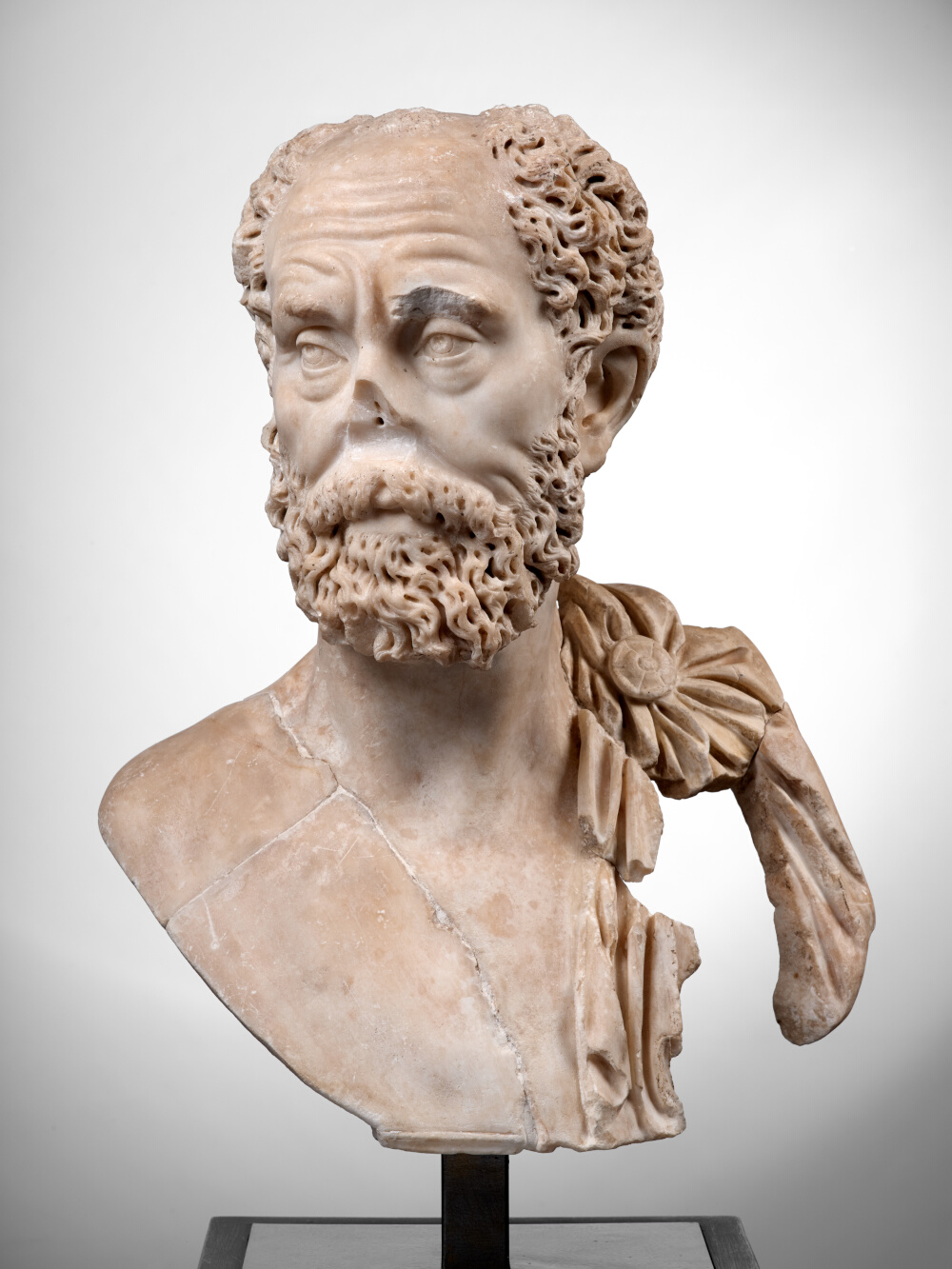
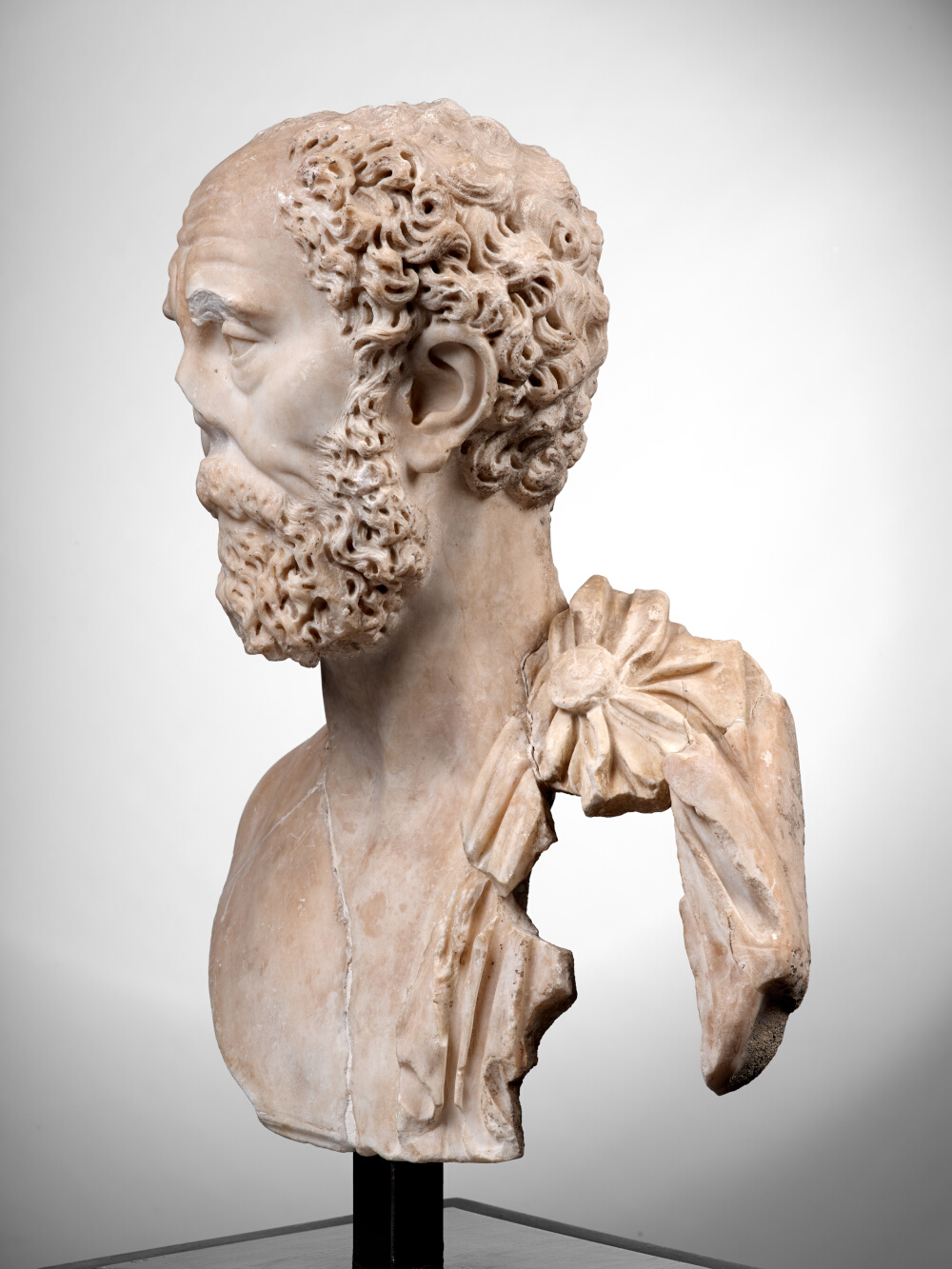
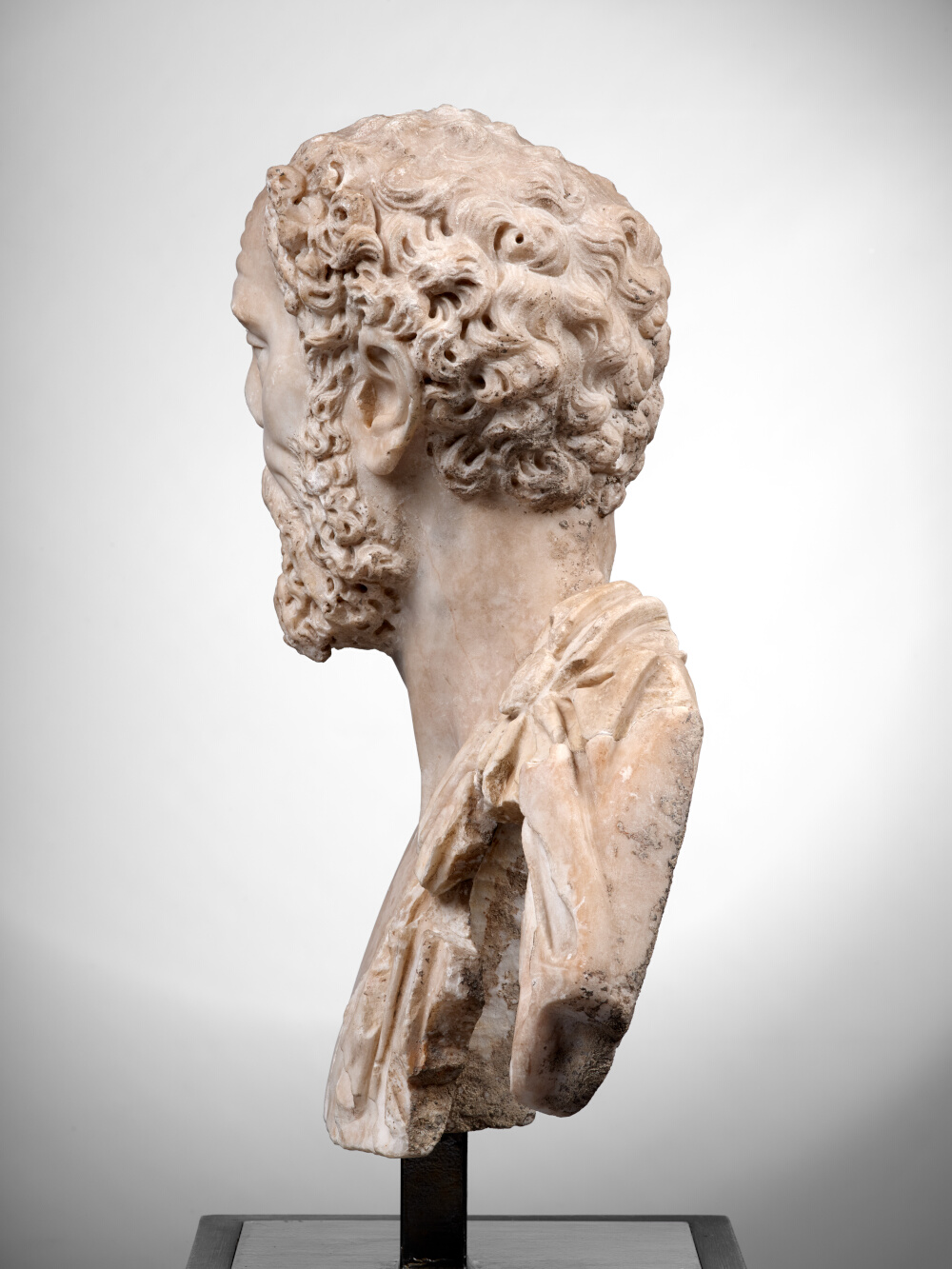
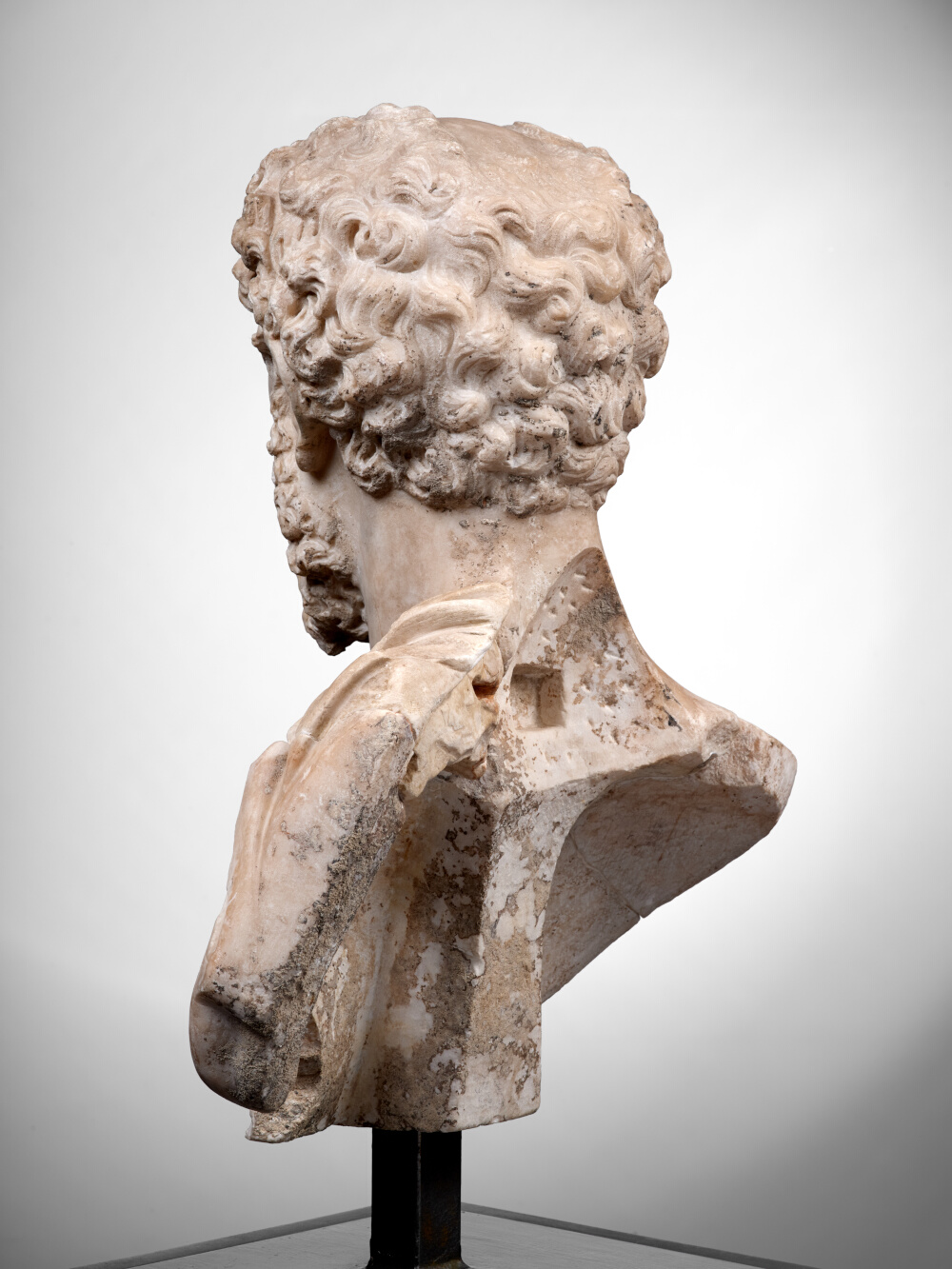
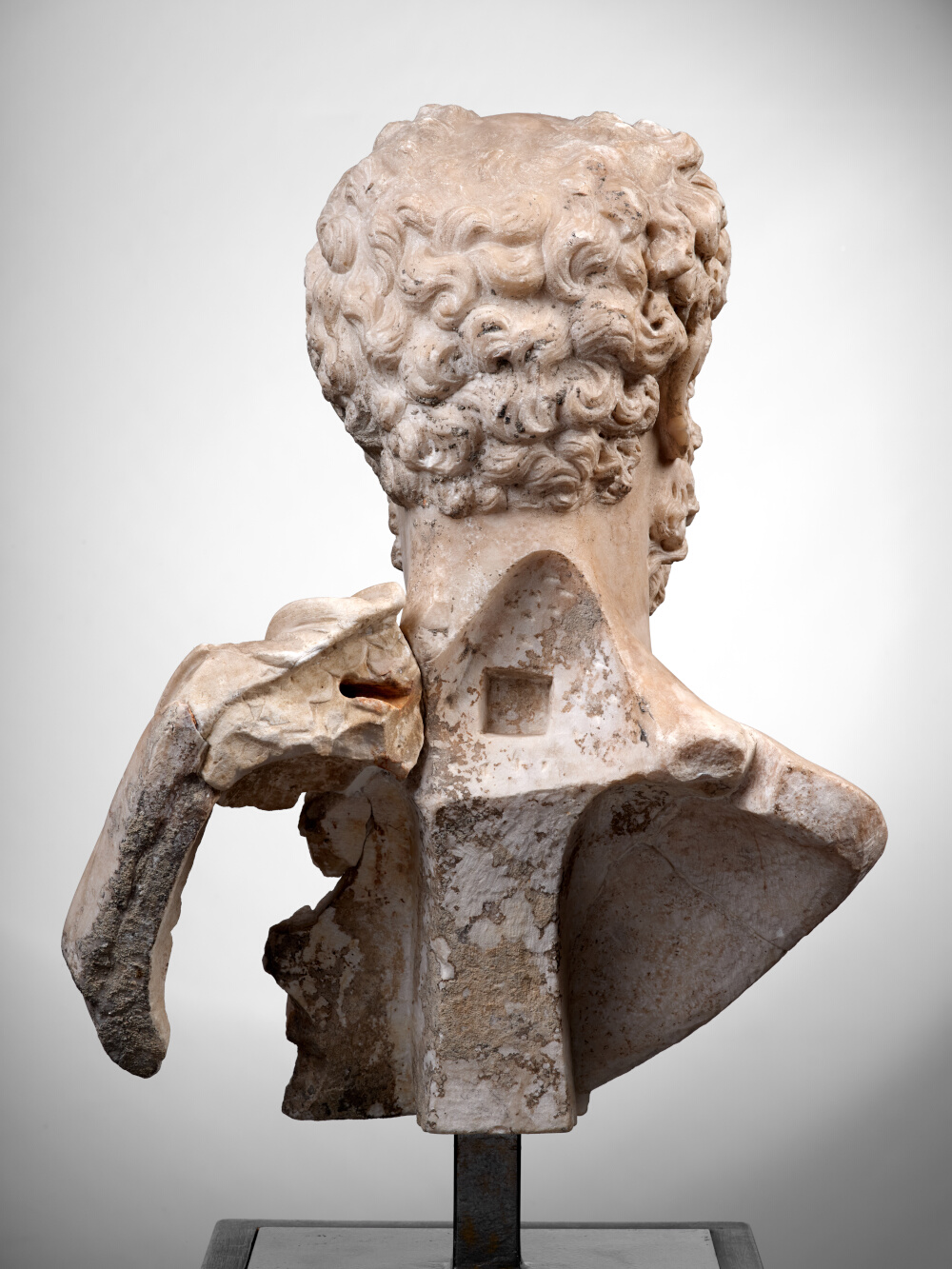
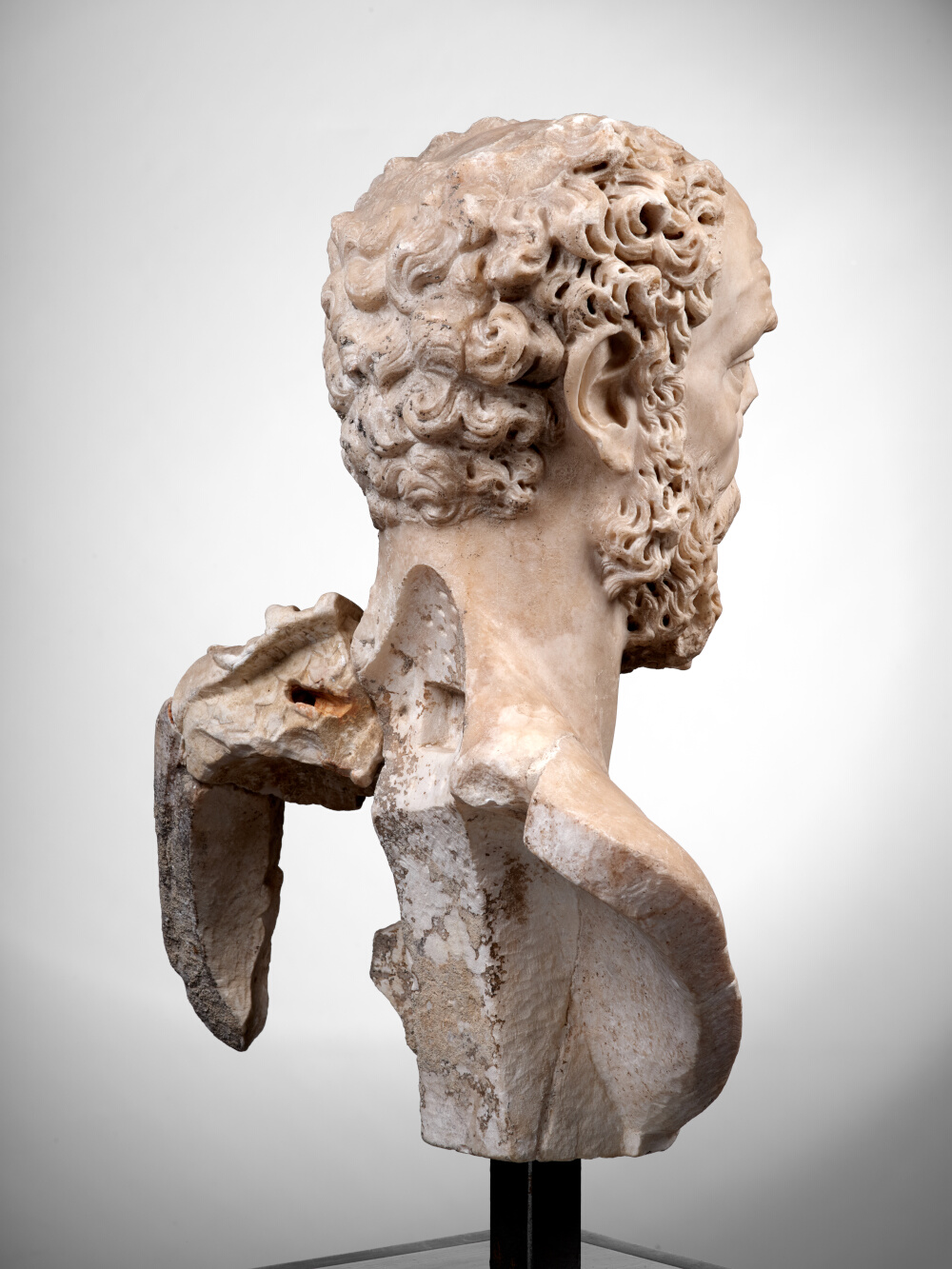
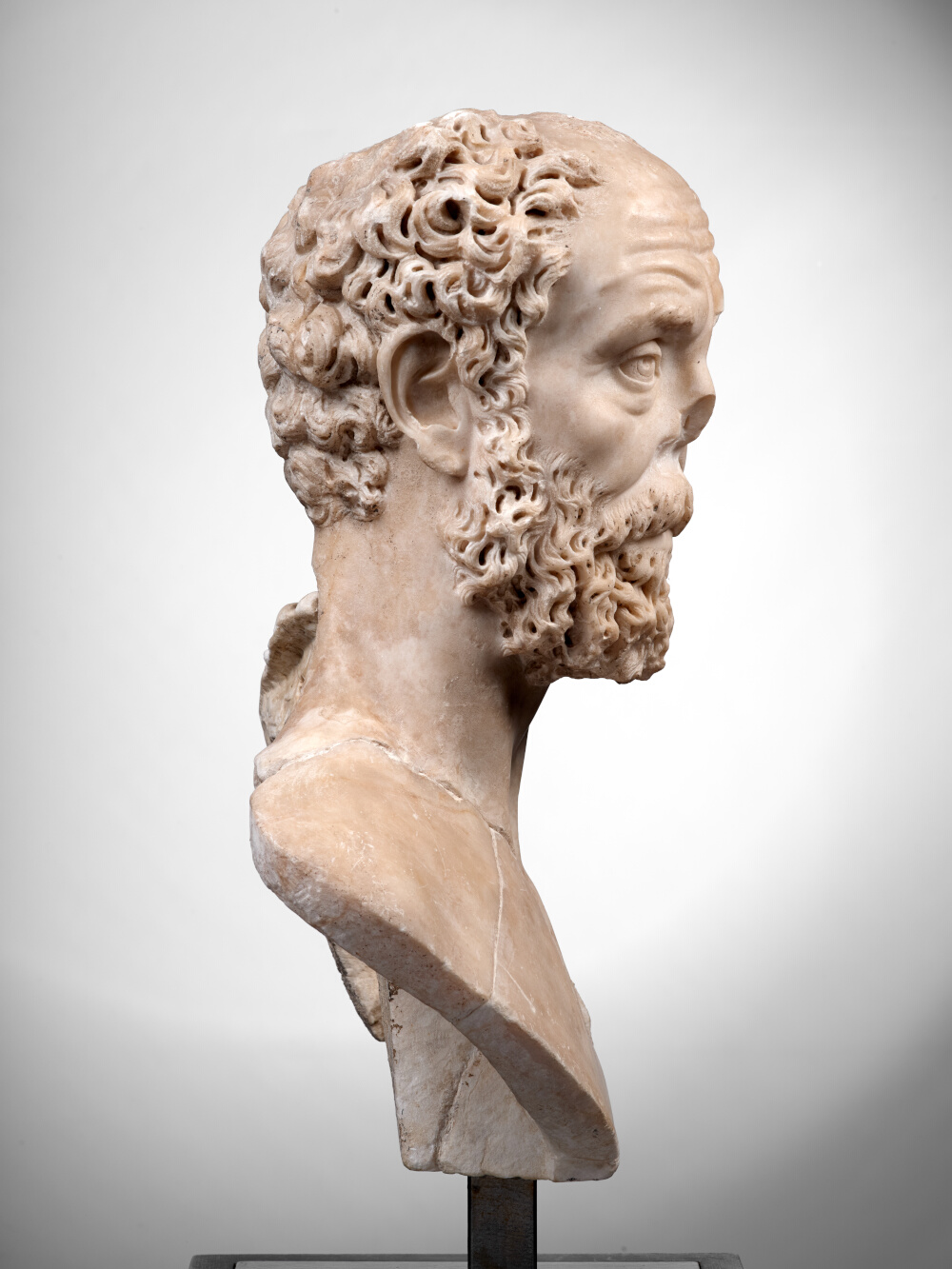
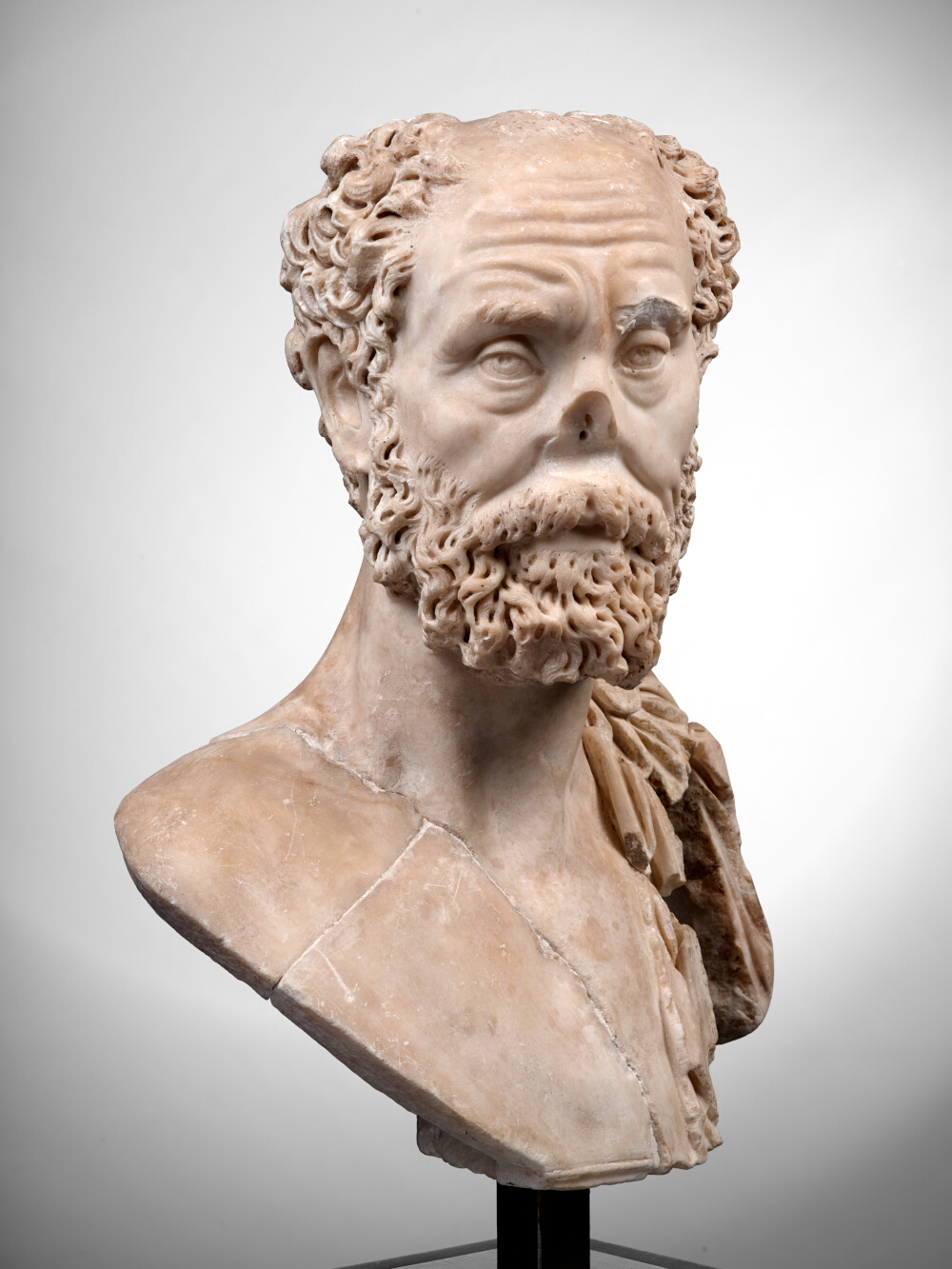
- Date de création
- End of the 2\nd\ century
- Material
- Göktepe marble, district 3 (Turkey)
- Dimensions
- H. 55,5 x l. 43 x P. 23 (cm)
- Inventory number
- Ra 70
- Photo credits
- Daniel Martin
The heroic and naked bust, and the paludamentum folded over the left shoulder and held in place by a round fibula in the shape of a six-petalled rosette, is part of a tradition that dates back to the very last years of the 1st century AD, and often included a baldric worn obliquely over the torso. The oldest examples are two busts depicting Domitian in Leipzig (now destroyed) and Toledo (USA) and, among the private portraits, a bust at the Musei capitolini (inv. 678), usually dated to the end of Domitian’s reign. The bust in Toulouse, with its « breastplate » shape - without the slightest indication of where the arms begin - the equivalent of which is only found at the very beginning of the 2nd century, is therefore somewhat surprising for its time, and seems to bear witness to a return to ancient forms that were generally not popular at that time.
The extreme realism of the features of this magnificent portrait in Toulouse is astonishing, as evidenced by the noticeable baldness (with a small isolated tuft of hair just in front of the top of the head), the wrinkled forehead, the frowning eyebrows, and the quite extraordinary modelling of the area around the eyes, with its « crow’s feet » (on the right eye only) and bags, the naso-labial folds that extend on the left side into two additional folds at the beginning of the beard, as well as the certain lack of symmetry in the expression. The sensitive gaze, combined with the head turned to the right, seems to reflect a rich inner life and great intellectual vitality. K. Fittschen emphasised the similarity between this work and 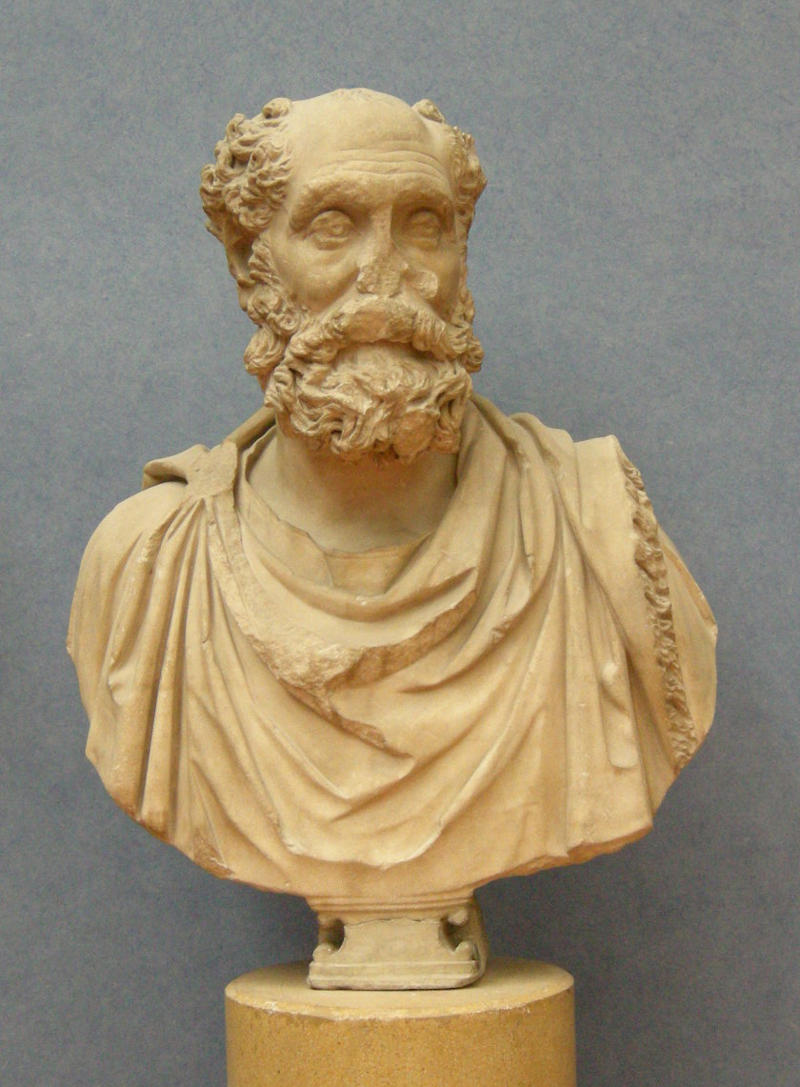 a portrait, the bust of which is clothed, that is kept at the Bardini Museum in Florence K. Fittschen, « Ein Bildnis in Privatbesitz. Zum Realismus Römischer Porträts Der Mittleren Und Späteren Prinzipatszeit, » Eikones. Studien zum griechischen und römischen Bildnis. Hans Jucker zum sechzigsten Geburtstag gewidmet, 12, 1980, pp. 108–114, en partic. p. 113..
a portrait, the bust of which is clothed, that is kept at the Bardini Museum in Florence K. Fittschen, « Ein Bildnis in Privatbesitz. Zum Realismus Römischer Porträts Der Mittleren Und Späteren Prinzipatszeit, » Eikones. Studien zum griechischen und römischen Bildnis. Hans Jucker zum sechzigsten Geburtstag gewidmet, 12, 1980, pp. 108–114, en partic. p. 113..
Could this bust discovered in Chiragan be that of an intellectual? Are the frowning eyebrows – meant to convey the individual’s concentration - and baldness, enough to make him so? The paludamentum folded over the left shoulder refers to the ‘military’ world, or, perhaps more accurately, to those high-ranking officials of the Empire whose duties can be both military and administrative. At the end of the 2nd century, culture was indeed one of the values that conferred real prestige, and granted access to lofty functions at the top of the Roman state: the great jurists in particular, many of whom were members of the Emperor’s Council under Septimius Severus and Severus Alexander, and some of whom were appointed Prefects of the Praetorian guard, belonged to this category.
According to J.-C. Balty 2020, Les Portraits Romains : L’époque des Sévères, Toulouse, p. 169-175.
Bibliography
- Balty, Cazes 2021 J.-C. Balty, D. Cazes, Les portraits romains, 1 : L’époque des Sévères, 1.3 (Sculptures antiques de Chiragan (Martres-Tolosane), Toulouse. p. 36-38, 169-175, fig. 25, 26
- Cazes et al. 1999 D. Cazes, E. Ugaglia, V. Geneviève, L. Mouysset, J.-C. Arramond, Q. Cazes, Le Musée Saint-Raymond : musée des Antiques de Toulouse, Toulouse-Paris. p. 134
- Du Mège 1835 A. Du Mège, Description du musée des Antiques de Toulouse, Toulouse. no 221
- Du Mège 1828 A. Du Mège, Notice des monumens antiques et des objets de sculpture moderne conservés dans le musée de Toulouse, Toulouse. no 136
- Espérandieu 1908 É. Espérandieu, Recueil général des bas-reliefs de la Gaule romaine, 2. Aquitaine, Paris. no 982
- Fittschen 1980 K. Fittschen, « Ein Bildnis in Privatbesitz. Zum Realismus Römischer Porträts Der Mittleren Und Späteren Prinzipatszeit, » Eikones. Studien zum griechischen und römischen Bildnis. Hans Jucker zum sechzigsten Geburtstag gewidmet, 12, pp. 108–114. p. 108-114
- Gelzer 1980 T. Gelzer, Eikones: Studien zum griechischen und römischen Bildnis : Hans Jucker zum sechzigsten Geburtstag Gewidmet, Bern.
- Joulin 1901 L. Joulin, Les établissements gallo-romains de la plaine de Martres-Tolosane, Paris. no 306
- Nocentini 1965 S. Nocentini, Sculture greche, etrusche e romane del Museo Bardini in Firenze, Rome. p. 68-71, fig. pl. XVI, XVII
- Rachou 1912 H. Rachou, Catalogue des collections de sculpture et d’épigraphie du musée de Toulouse, Toulouse. no 70
- Roschach 1892 E. Roschach, Catalogue des musées archéologiques de la ville de Toulouse : Musée des Augustins, Musée Saint-Raymond, Toulouse. no 70
To cite this notice
Capus P., "Heroic bust of a mature man", in The sculptures of the roman villa of Chiragan, Toulouse, 2019, online <https://villachiragan.saintraymond.toulouse.fr/en/ark:/87276/a_ra_70>.